What makes a Deer Rifle?
I stumbled upon an article by the late Finn Aagard. Finn wrote for the American RIfleman back in the 80s and 90s. He was from Kenya and worked as a big game hunter until Kenya closed down hunting in the late 70’s and moved to Texas. His writing on guns and hunting was superb. He influenced me more than any other writer in my formative years when I was first getting into deer hunting.
The article Finn wrote that caught my attention was titled “What is a Deer Rifle?” I sat down yesterday to plow through this lost gem. By the time I was done, I had less of an idea of what constitutes a deer rifle than when I started. Sadly, it was not one of his better works. He started off with an anecdote about the .218 Bee, swerved to include the 308 Norma, and ended up with a story about 375 H&H. Somewhere in the latter half, he includes one paragraph listing 20-some chamberings he used, and finally admits he has a thing for 7mm Mauser. I thought I could do better.
Rather than wander through the extremes, let me start at the middle and work out. Whitetail deer are pretty much smack-dab in the middle of things. They are roughly the size of a human, so whatever has been contrived to kill a man at a given distance will do in deer. Deer don’t have armor. They are not going to eat you or stomp you to death if you screw up. They are remarkably easy to kill if you hit the right thing in the right way.
The Method Dictates
Take any rifle design, and you can probably make it work on a whitetail. Which is best is wholly dependent on how you intend to hunt them. Stalking on the ground, I found to be a lot like wing shooting. Deer would jump out unexpectedly, and I would have to take a fast offhand shot. For those times, I resorted to my Remington 1100 12 GA shotgun. Remmie Sluggers at 20 yards are about as potent a deer medicine as you’ll find. Out of a treestand, I have found a favorite in my Savage 99 lever in 308 WIN. For late-afternoon sits in the blind, I prefer a bolt gun. However, that just shows that there really are no best guns. My favorites are there, because of over 40 years of experience. Your experience will be different.
If you are hunting on foot, then you will want to pay attention to two things. First, is how the rifle mounts. It needs to come right up and settle in without you thinking about it. That is why I just put a different barrel on my favorite bird gun to go deer hunting. Sights have to be automatic. If you are sitting on your butt from a blind and can take your time, you can make nearly anything work. Still hunting and stalking are where it has to work first time/every time.
I will be honest. My pussy-footing days are probably behind me. I could blame the chemo and the neuropathy caused in my feet. However, age itself has taken its toll. I can’t hunt and hike at the same time anymore. However, what would I take? Well, the aforementioned 1100 would be right up there. My new Rossi Model 92 in 44 Mag would do the trick. My TC Compass in 7mm-08 would also do well. I mention the latter only because it is stocked just right. The scope comes up just right. Finding a stalking rifle is going to require kissing some toads. In my case, I needed a shorter-than-average stock. Whatever sights you pick need to come up without conscious thought or adjustment. This is also where a pump comes in handy. My Remington 7600 in 35 Whelen would make an excellent stalker.
The vast majority of my deer hunting effort has been out of treestands. For the first 25 seasons, my main interest was bow hunting, and I simply repurposed my bow stands for rifle season. That meant I had shots within 50 yards. I found nearly anything would work at that distance. Fit was not as much of a problem as ground work. However, I had to consider the extra layers of clothing, and getting all scrunched up to take a shot over the front shooting rail and finding I could not get a good sight picture in my scope. Getting everything ironed out took several iterations.
My Savage 99 in 308 WIN is the culmination of that effort. Along the way, I’ve taken two of the camp records including the current all-time buck. I don’t mean to tout this as the ultimate treestand gun. It is just the one I use. It was by no sense perfect, and it still has flaws, but it is still my go-to gun for the Rifle Opener. I started off with classic Weaver swivel sights. I had them on several rifles and the idea was this: if you can’t see out of the scope, swivel the scope out of the way and shoot off the irons. I found out that if it was too dark to see out of the scope, the irons were useless. Second, in 2008, I nudged the scope bringing it up into the stand and managed to booger a shot at a nice buck just feet away from the stand later that morning. The scope and the mounts came off and I put a rock-solid one-piece scope mount on the rifle. The new scope was one of those 3-9X40mm Bushnells that I am so fond of. However, that required higher mounts and I had to raise the comb of the rifle to get a good cheek weld. That’s why the leather butt pad.
For my longer venues, I stick with bolt-actions. I have a variety. No muss, no fuss. Again, I find the fit of the gun to be paramount, but this is so I am getting a perfect sight picture. I prefer different rifles for early and late season; the latter has shorter stocks to compensate for the extra clothing.
What sort of action?
If you had asked me 25 years ago, I would have gone on about being ready for fast 2nd shots. I was using a Remington 742 semi-auto in those days, and I was big on trying to work in a second or third shot. However, over time, I can count only a handful of incidents where there was any opportunity let alone reason for a second shot. 20-some years ago, I started loading only 3 rounds. My thought was, if the deer is not down in 3 shots, something is wrong. It is time to sit back and rethink things. After 40-some years and 20-some deer rifles, I can tell you that a fast second shot is nearly a pipe dream, but it is handy when you need it.
Overall, my preference has grown toward bolt-actions. They are easy to set up. They are easy to maintain. They are extremely accurate.
Semi-auto: Complicated. Harder to clean. Can be less accurate due to all the machinations going on.
Lever Action: Very complicated actions. Actions are generally not as strong as bolt guns. Easier to jam.
Single-shots: Everything is simple except reloading.
Pump: I overall love my Remington 7600. My only reason for retiring it was that I decided the 35 Whelen chambering was just too much gun for whitetails.
A Quick Word about Modern Sporting Rifles
Modern Sporting Rifles (MSRs) often known as AR-Type rifles or the completely inflammatory (and meaningless)”Assault Rifles” have become increasingly popular over the past 30 years. If you are wondering if they work on whitetails, the answer is an unequivocal yes. Are they the best? My main objection is that they answer questions that just are not relevant to deer hunting. Chief among these is capacity. Working off a 20-round or larger magazine is unnecessary. In Kentucky, the maximum is 10 rounds. The bottom line is that the deer are not shooting back. There are no more or less “sporting” than any other weapon system. If you want to hunt with an MSR, that’s fine. If you feel the “need” to hunt with an MSR, then you are really missing what deer hunting is all about.
Can I really tell you to take one over the other? I used to do so all the time. People used to pay me to write opinions and I did. Here I am a good 10 years removed from that, and honestly, I cannot. If you look at my last few purchases that could be termed a deer rifle:
- Ruger Model 44 semi-auto in 44 Mag
- Stoeger double-barrelled coach gun in 12 GA customized for deer hunting
- Thompson Center Compass in 7mm-08
- Pedersoli Brown Bess Musket
- Rossi Model 92 lever in 44 Magnum.
. . . I’d be a hypocrite if I tried to rationalize all that. The only thing I can tell you is that, of all that bunch, the TC Compass is really the only practical choice of the bunch. All the rest were there to scratch an itch.
Deer Chamberings
About 20 years ago, I was willing to stand on the Pillar of TrVth and proclaim that .300 Savage was the perfect deer chambering. The fact that no one was chambering deer rifles for it didn’t stop me. I still think it is a great place to focus one’s attention when talking about deer and rifles. What makes it good?
First off, the caliber.
There are close to 100 entries in our camp’s deer log. Of these, the overwhelming majority include 30-somethings. The vast majority of these are 30-06. Of the rest, most are a handful of downloaded .308 WINs that I have used out of my Savage 99 to mimic the 300 Savage. The ranges of all of these shots are 200 yards or less.
Could the 300 Savage have taken all of these deer? Yes. However, I have deliberately limited my shots with my Savage 99 to 100 yards. It is a rifle set up to take deer at close ranges. The average deer taken by the average hunter is hit within 80 yards. Back in 2003, I bought the Savage 99 in 308 WIN, because I believed the 300 Savage was becoming an orphan. I download my rounds to 300 Savage levels, so I have a nice low-recoil rifle for my treestands.
Would a full house 308 WIN, or a 30-06 do just as good? Yes– and then some.
So why not a 308 WIN or 30-06 as the ultimate deer cartridge? Look, if I had to pick one chambering forever, it would be the 30-06. It is the best all-around of the bunch. It really shines when discussing longer ranges and heavier bullets. It is a far more versatile gun. 308 WIN basically does 90% of what the 30-06 can do, but the difference is only noticeable well out past 300 yards or with bullets exceeding 180 grains. For whitetail deer, these are not issues. Similarly, a 300 Savage does about 90% of the 308 WIN. However, the differences are now down to what’s happening within a reasonable range for deer. My 8mm Mauser is somewhere between the 308 WIN and 30-06 in performance, firing a 175-grain bullet.
Why not 30-30? That’s supposedly the ultimate whitetail cartridge.
My experience with 30-30 is not that great. Yes, it killed deer for me. However, some deer ran a bit. A couple needed a second shot. Some guys will tell you a 30-30 is good out to 300 yards. I’d say 150 is a better upper end, but I grab something more powerful if the distance is greater than 50-100 yards.
Why not 7mms?
My new favorite deer rifle is my TC Compass in 7mm-08. I have only had it out a couple of seasons, and it has managed to pole-axe one small doe. However, I see a lot of potential here. I saw a lot of performance with a minimal amount of recoil. Foxtrot Charlie came out last season with his venerable 7mm Mauser and put down the #2 camp record and followed up with a nice 150-yard shot on a doe the next day. The two cartridges are ballistically similar.
The same that can be said of 30-somethings can be true of 7mms. The rarely-seen 7-30 Waters is at the bottom end. 7mm-08 and 7X57 are in the middle. 280 Remington is a bit above these, but right away, you’re already pulling outside of whitetail deer territory. By the time you get to 7mm Rem Mag, you are talking about performance and distances well beyond where most folks encounter whitetail.
Here is the thing that’s missing: Right now, a round of 308 Win 150 grain is about $1/round at the store. A round of 139 grain 7mm-08 is about $2/round. 30-06 and 308 WIN are ubiquitous. I play with oddball rounds because I reload and I can do it on the cheap.
What about 270 Winchester?
Every man has the right to at least one blinkered bull-headed prejudice for or against a cartridge. Mine is 270 Winchester. The only logical reason I can give was that back when I was a kid, I used to sit in the barbershop and read Outdoor Life magazines while the rest of the shop argued which was better –30-06 or 270 WIN. Jack O’Connor was always writing about 270 Winchester and always going places and shooting things I was probably never going to see. Meanwhile, the guys from WWII were my Dad’s age and they had depended on 30-06 for their lives. At some point, I took sides. That’s the nut of it. I don’t expect anyone to model themselves after me.
The truth is, 270 WIN seems to do everything a 30-06 can do faster and better. However, even Jack O’Connor would tell you the 30-06 is just as good and at the ranges we’re talking about and the game involved, it might be a better choice.
On the other side of this is my preference for 35 Whelen. This is a 30-06 case blown out to 35 caliber. I hunted with a Remington 7600 in 35 Whelen for 10 years and nailed at least one deer per year. It used bigger bullets, made a bigger boom and inflicted far more recoil than my 30-06. After a decade, I finally wised up and realized I was not killing deer any deader. I retired The Whelenizer and bought a new 30-06. I still keep a round of 200-grain ammo on my desk as a keepsake. Rolling it around in my hand just feels right.
What is Legally a Deer Rifle?
Let me give you two examples from close to home. One is the Commonwealth of Kentucky:

Basically, anything goes. I would apply a bit of moderation here. Stick to the middle of the road. I call 300 Savage the absolute middle. Your mileage may vary.
Now let me show you Ohio’s idea on acceptable kit:

The story on Ohio is that up until fairly recently, you could not hunt deer with a centerfire rifle. It has only been within the past decade that they have liberalized the rules. The current straight-walled cartridge rule is their second step along the path. I used to hunt Ohio with a my 12 Gauge shotgun. The current rules are still kind of wonky; you can hunt groundhog with a 30-06, but not whitetails– go figure. Still it is an improvement.
Of the chamberings that are legal, I picked 44 Magnum as my choice for an Ohio-legal chambering. I already had brass and bullets and dies, and I did not see 100 yards as a severe limitation. Indeed, the one deer I nailed with a 44 Magnum was at 120 yards. The chances of my hunting Ohio again under these rules are actually kind of minimal, but I wanted to explore the options. I have regularly hunted in Kentucky under Ohio rules, just to kick it up old-style as this was how I started.
Of all the made-for-Ohio cartridges, I would say the old 38-55 Winchester (parent case of the 30-30) is about right. I have a Marlin 336 that I am going to send off for a rebore. 357 Maximum is also optimal, but it is hard to come by in anything other than a single-shot. 350 Legend and 360 Buckhammer both look good. 45-70? 444 Marlin? Look everybody has their limit on punishment. I used to be a real recoil hound, but the older I get the less enthused I am for shoulder abuse. The trick here is that bagging a deer can be done with far less.
How low can you go?
I have held off discussing the lower-caliber options so far. How low can you go? How low do you want to go? I would set 223 Remington as a sound bottom floor. Some states set .243 as the lowest legal caliber for deer. If you want to pursue this path and it is legal where you hunt, go for it. Everyone is talking up the 6.5 Creedmore as the new super cartridge for accuracy. Yeah, it is good, but it’s because the ammo manufacturers and the firearm manufacturers deliberately got together to maintain tight specs. Honestly, in the realm of whitetail deer inside 200 yards, the 7mm-08 is as good or better, but it is all about minutiae. The deer are not going to know the difference.
243 Winchester is a good choice for a lot of people. I have a bit of a prejudice against it only because I have read so many arguments from guys online over which is the better premium bullet. They all seem to be experts on bullet failure. You don’t hear that with the 308 Win crowd.
I have a 25-06 that my buddy O.T. sold me just before he died. He thought it was the ultimate deer rifle and a lot of the neighbors thought so too. To be honest, I have not seen it perform that well, but I’ve got it back out this year with a new 100-grain load. I’ll see what it can do. I have had the rifle for several years and started out with a lighter load resembling a .257 Roberts. That did not impress me.
How Big Can It Go?
As long as it is legal in your state, the sky is the limit. Guys regularly take 375 H&H deer hunting to get ready for Africa. At some point, as I mentioned a few times previously, recoil ends up deciding. 35 Whelen ended up being my dividing line. I keep the Whelenizer around because I might want it for Moose hunting. Someone else is going to take a light 45-70 rifle, touch off a round, get a big smile on their face, and ask for more. My taste for recoil diminished with age. The recoil on my 12-gauge turkey gun is still up around a .416 Rigby elephant rifle, but I only shoot it twice a year.
Wrapping it Up
When I started this article, I thought I might come up with a better answer than the great Finn Aagard. I see now why Finn’s head was swirling. Forty seasons ago, if you had asked me what a deer rifle was, I could tell you. However, the deeper you go, the hazier the picture gets. In some ways, it is a bit like trying to nail down the definition of a fish. Everybody knows what a fish is, but if you dig down through the taxonomy, you cannot build the scientific clad that encompasses all fish that does not end up including mice, whales, manatees, and humans. Somewhere along the way, the Vatican even decided turtles were fish, so the Faithful could eat turtle soup on Friday. Go figure. The other thing that hinders a definite definition of a deer rifle is that deer are so easy to kill. A 22 LR will kill a deer. So will a 50 BMG. Every hunter has to figure out what says “Deer Rifle” to them. My only advice is to not concentrate at the margins, but rather to stick to the middle of the road and go from there.
The 300 Savage is the middle, but I cannot recommend it– few rifles, little ammo. At the time I started, 30-06 was ubiquitous and it worked. Nowadays, I would say 308 WIN has nudged it out.
This post has already been read 834 times!
Views: 6
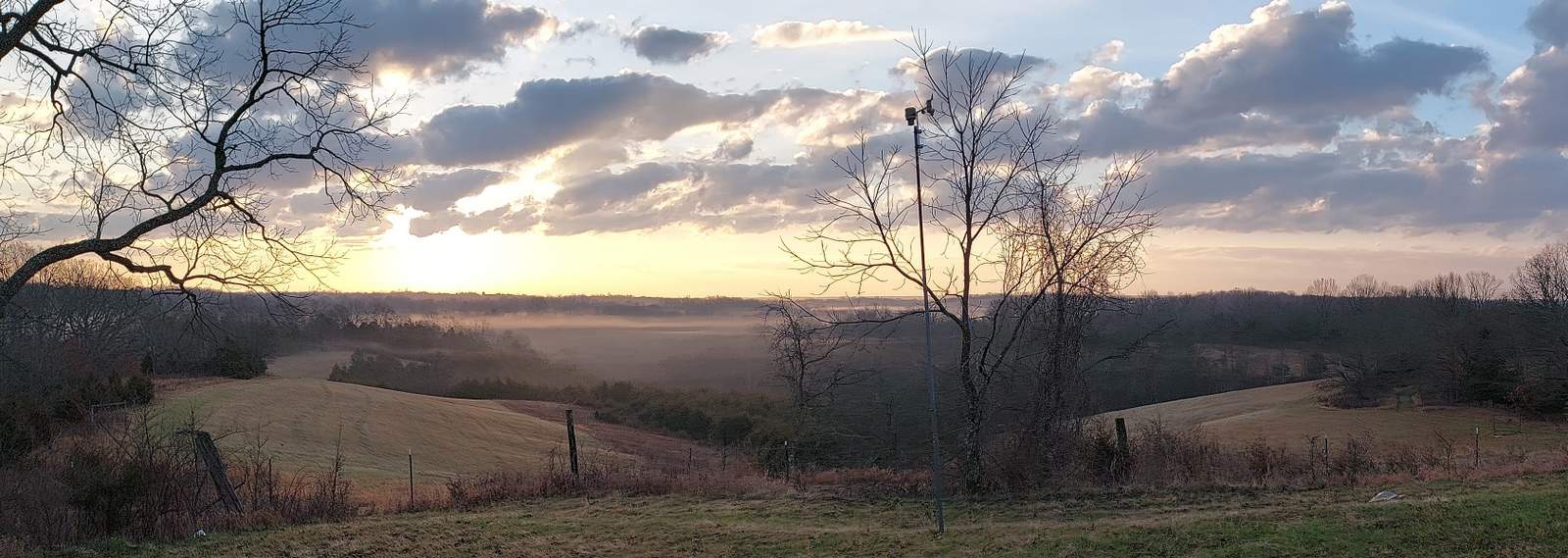



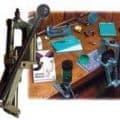
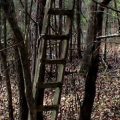

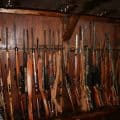
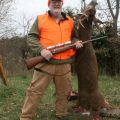
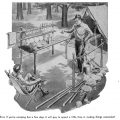
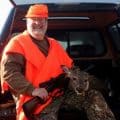
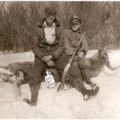
Comments
What makes a Deer Rifle? — No Comments
HTML tags allowed in your comment: <a href="" title=""> <abbr title=""> <acronym title=""> <b> <blockquote cite=""> <cite> <code> <del datetime=""> <em> <i> <q cite=""> <s> <strike> <strong>